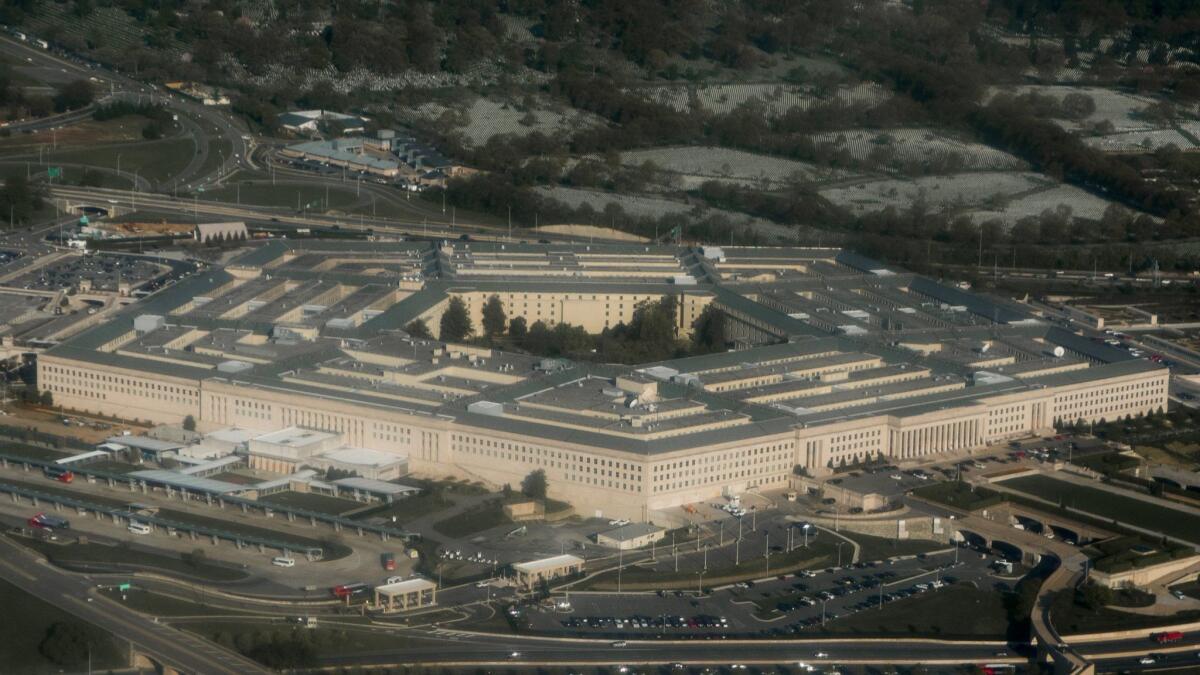Packages that may contain ricin found at Pentagon mail screening facility; suspicious envelope sent to Trump

Authorities at the Pentagon found at least two packages suspected of containing ricin, a poison made from castor beans, a spokesman said on Tuesday.
The Secret Service is also confirming that a suspicious envelope was addressed to President Trump.
In a statement Tuesday evening, the Secret Service says the envelope addressed to Trump was not received at the White House, nor did it ever enter the White House. The agency did not speak to the contents of the envelope or where it was received on Monday.
The White House had no comment.
Pentagon spokesman Chris Sherwood said the two envelopes found at its mail screening facility had been found Monday.
One envelope was addressed to Defense Secretary James N. Mattis, who is traveling in Europe this week, and the other to the Navy’s top officer, Adm. John Richardson, a Defense official said. The official spoke on condition of anonymity because the official wasn’t authorized to speak publicly before the FBI’s release of its findings.
Neither envelope entered the Pentagon. The mail screening facility is on the Pentagon grounds, but is separate from the main building.
Another Pentagon spokesman, Col. Rob Manning, said all U.S. Postal Service mail received at the screening facility Monday is under quarantine, but “poses no threat to Pentagon personnel.”
Ricin is part of the waste “mash” produced when castor oil is made. According to the Centers for Disease Control and Prevention, if it is made into a partially purified material or refined, ricin can be used as a weapon capable of killing people under certain circumstances.
UPDATES:
5:45 p.m.: This article was updated with details on a suspicious envelope sent to President Trump.
11:20 a.m.: This article was updated with details on who the envelopes were addressed to and when they were found.
This article was originally published at 10:50 a.m.
More to Read
Sign up for Essential California
The most important California stories and recommendations in your inbox every morning.
You may occasionally receive promotional content from the Los Angeles Times.










